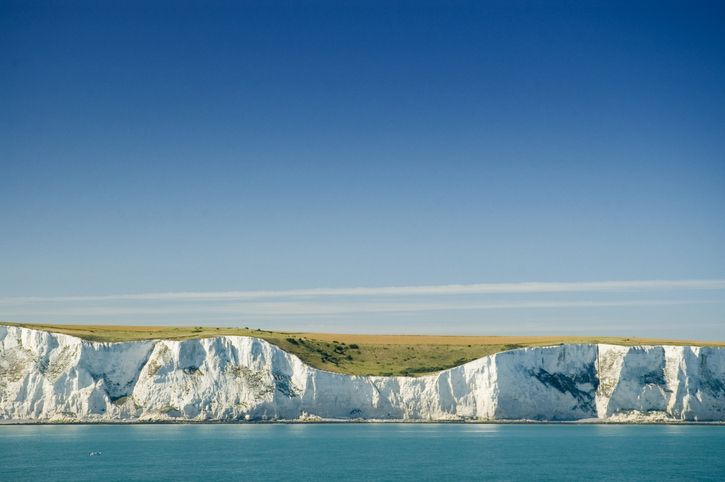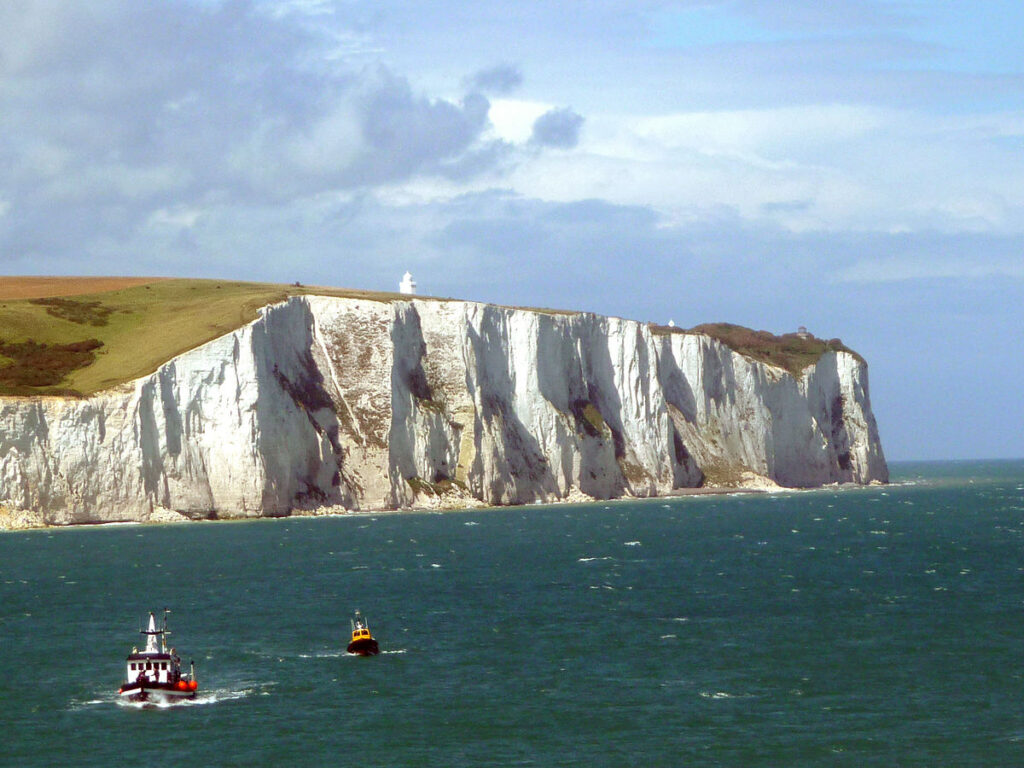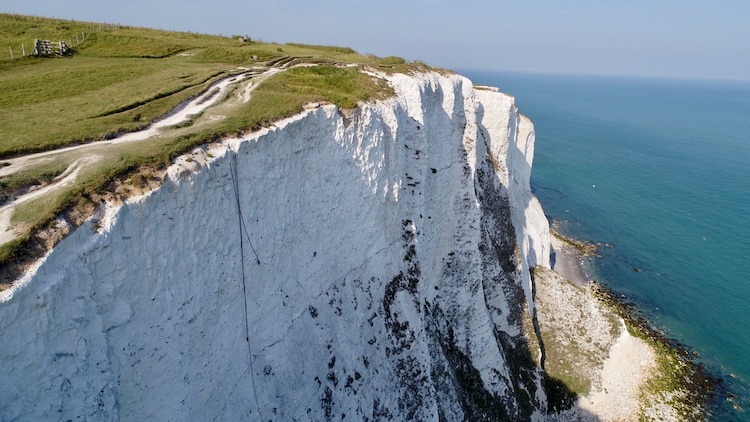
In the southeast corner of England, where the emerald waters of the English Channel gently kiss the shores of this storied island nation, a natural wonder stands as both a symbol of resilience and a breathtaking spectacle—the White Cliffs of Dover. These majestic chalk cliffs, with their sheer grandeur and timeless beauty, evoke a sense of wonder and awe that has captivated visitors for centuries.

Rising proudly to heights of up to 350 feet (106 meters), these magnificent cliffs extend for about eight miles (13 kilometers) along the coastline. Their chalky, brilliant white facade glimmers in the sunlight, forming a dramatic contrast with the azure expanse of the channel below. As the sun plays hide-and-seek with the clouds, the cliffs reveal an ever-changing palette of colors, from dazzling white to subtle shades of gold and gray.

But these cliffs are more than just a visual marvel; they hold a profound historical significance. The White Cliffs of Dover have long been a symbol of England’s enduring spirit and unwavering determination. They were the first sight of home for countless soldiers returning from the battlefields of Europe during both World Wars, a poignant reminder of the safety and comfort that awaited them.
For mariners navigating the treacherous waters of the channel, the White Cliffs have been a guiding beacon, signaling their approach to the British Isles. These cliffs have witnessed the ebb and flow of history, standing sentinel over millennia of human endeavors.

To experience the White Cliffs of Dover is to immerse oneself in the rich tapestry of English heritage. Visitors can explore the area on foot, following winding coastal paths that offer breathtaking vistas of the cliffs and the surrounding countryside. The serene beauty of the landscape has inspired poets, writers, and artists throughout history, including William Shakespeare and Vera Lynn.
Beyond their natural splendor, the cliffs harbor a diverse ecosystem of plants and wildlife, making them a designated Site of Special Scientific Interest. Birdwatchers can spot peregrine falcons, kittiwakes, and fulmars nesting among the crevices, while rare and colorful wildflowers adorn the cliff tops.

As the tides of time continue to shape and reshape this iconic landscape, the White Cliffs of Dover remain an enduring testament to the captivating allure of nature and the enduring spirit of a nation. Whether admired from afar or explored up close, these cliffs are a living masterpiece, inviting all who gaze upon them to contemplate the grandeur of the world we inhabit. The White Cliffs of Dover stand not at the edge of the world but at the heart of its eternal beauty.

Leave a Reply